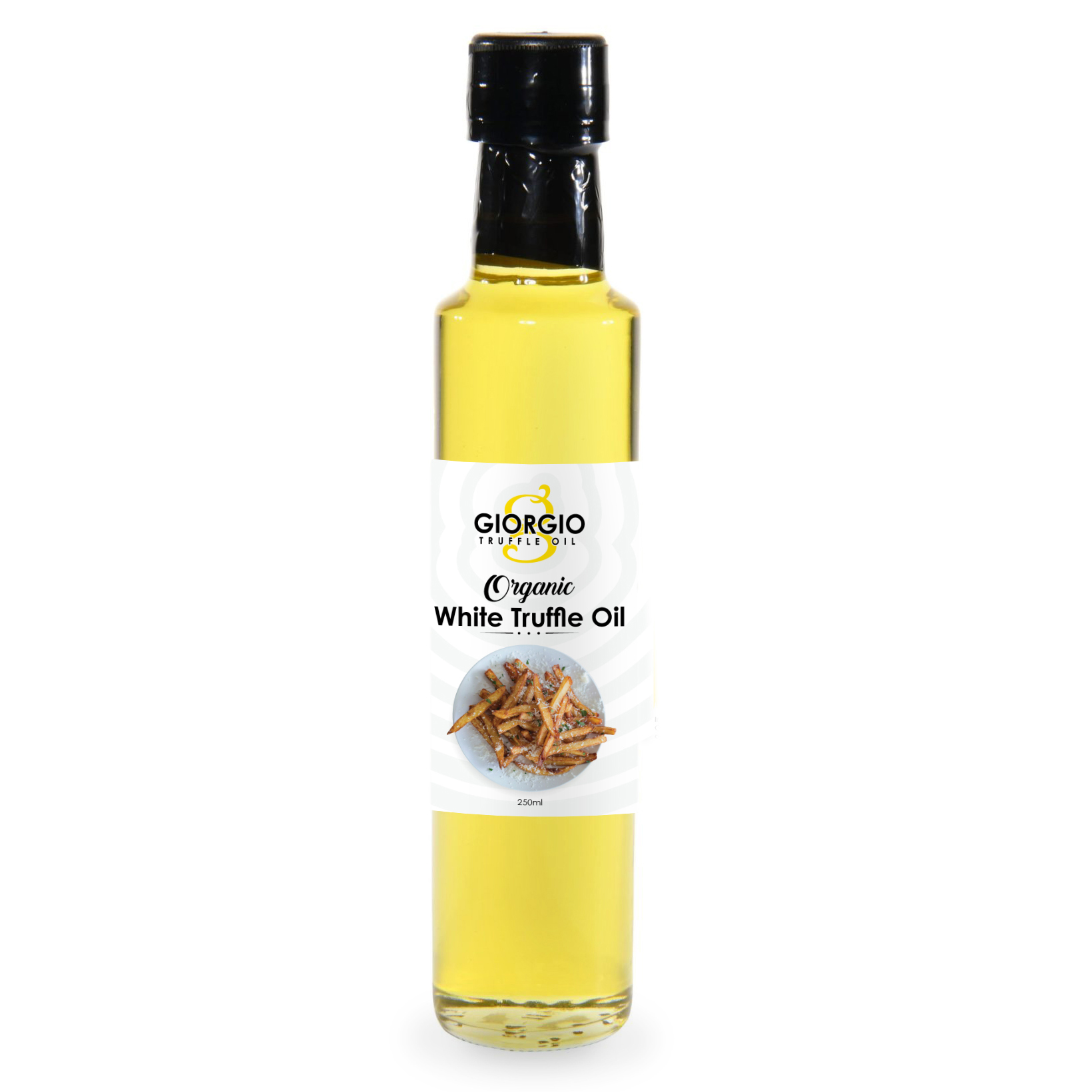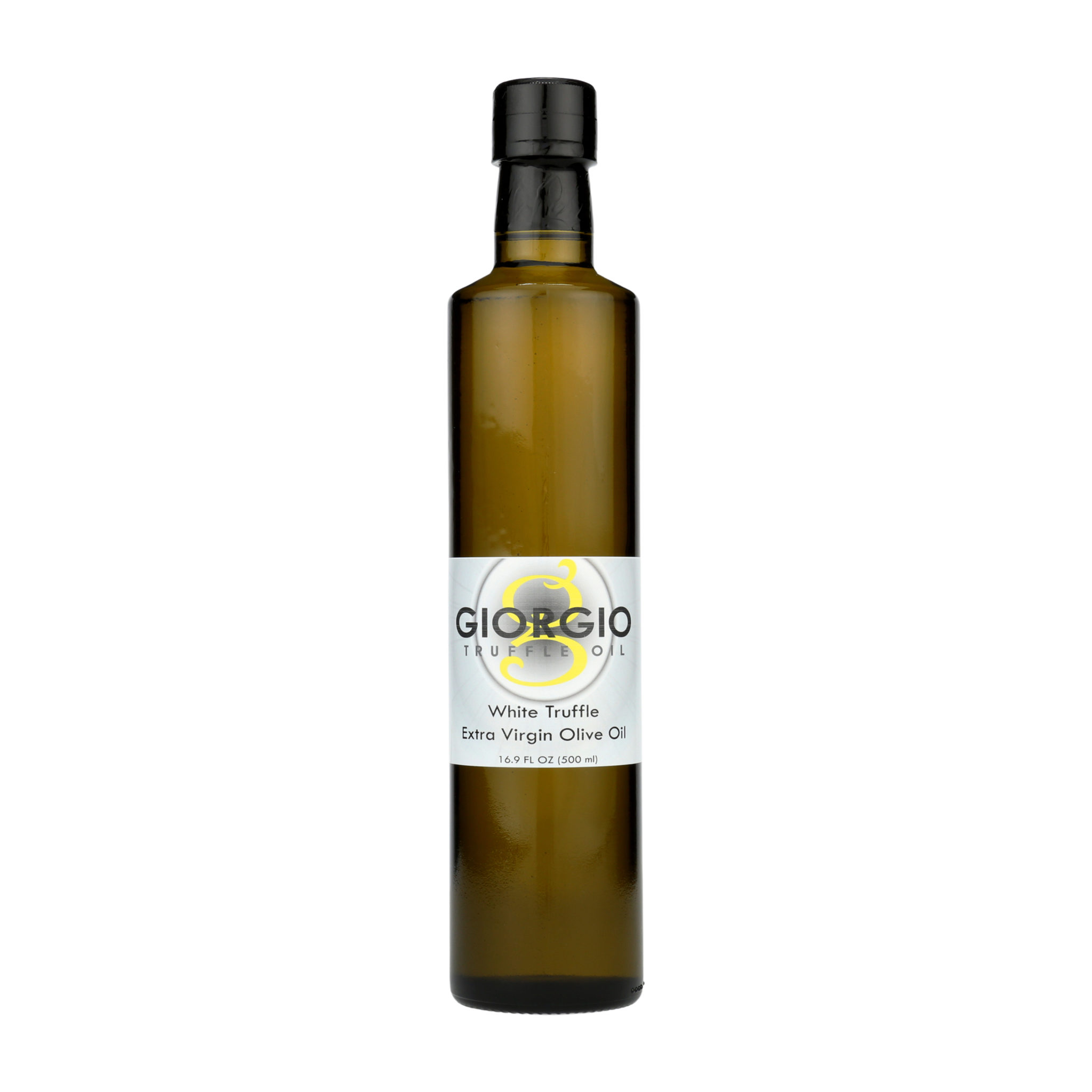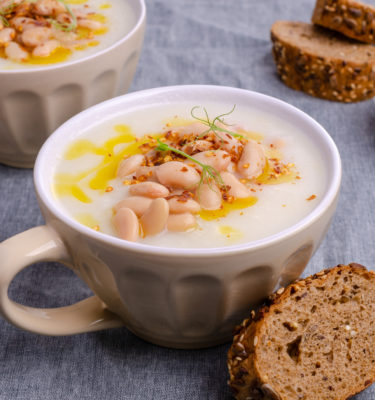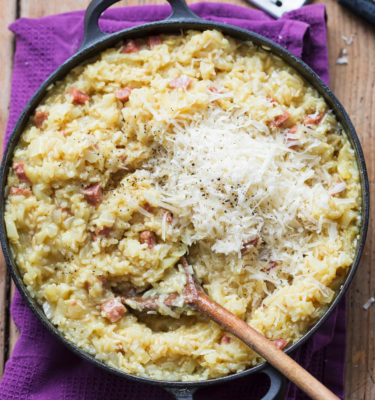20 Minute White Truffle Creamy Ziti Florentine Recipe
White Truffle Olive Oil and Creamy Ziti Florentine Recipe
INGREDIENTS:
- 1-pound dry ziti pasta
- Salt and pepper, to taste
- 2 tablespoons Giorgio White Truffle Olive Oil
- 1 bunch scallions
- 4 cups baby spinach leaves
- 1/2 cup freshly grated Parmesan, plus more for garnish
- 1 cup fresh ricotta
- 1/2 cup loosely packed torn basil leaves
- 1/4 cup chopped fresh parsley
METHOD:
1 Cook the pasta: Bring a large pot of heavily salted water to a boil.
Add the ziti and cook for 7 to 8 minutes, or until al dente (firm to the bite). Scoop out and reserve 2 cups of the starchy pasta cooking water, and drain the pasta in a colander.
2 Meanwhile, cook the scallions and spinach: In a large skillet over medium, heat the truffle olive oil. Add the scallions and cook, stirring often, for 2 minutes, or until the scallions soften. Add the spinach and cook, turning with tongs, for 1 to 2 minutes, or just until it wilts.
3 Finish the pasta: Add the cooked ziti to the skillet, along with 1/2 cup of the pasta cooking water. Add the Parmesan, ricotta, basil, and parsley. Stir vigorously until combined.
Add more pasta cooking water if the pasta seems dry.
Giorgio Truffle Shop
Dec 2019
1 review for White Truffle Olive Oil and Creamy Ziti Florentine Recipe
You must be logged in to post a review.








Gabrielle –
AMAZING! The best thing I’ve made in a really long time. I don’t need to go out for pasta any longer. My husband raved about it too.
.
My modifications:
*Add 1 large minced garlic clove and the juice of 1/2 lemon to olive oil/scallion mixture
*Double the spinach
*Add diced roma tomatoes (I used two tomatoes)
*Top with a shredded Italian cheese blend and cover until melted